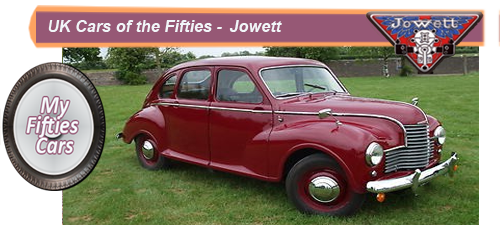
At one time among the most substantial independents in the UK car industry, the Jowett Car company was formed in the Yorkshire industrial city Bradford in 1901, by the brothers Benjamin and William Jowett, working with another partner named Arthur Lamb.
 Jowetts, as they became known, were among the earliest pioneers of car manufacturing in Britain, focusing on the production of compact and affordable cars and small vans.
Jowetts, as they became known, were among the earliest pioneers of car manufacturing in Britain, focusing on the production of compact and affordable cars and small vans.
After almost two decades of consolidation and planned expansion, in 1919 Jowetts had grown enough to be able to move to a more spacious plant, the Springfield Works site in the town of Idle just outside Bradford in 1919.
 The Springfield Works was to remain the company’s home for the 35 years that they continued in business.
The Springfield Works was to remain the company’s home for the 35 years that they continued in business.
![]()
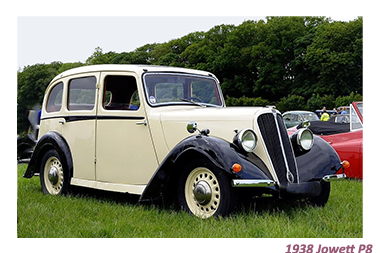 In the period up until the outbreak of the Secomnd World War, Jowetts continued to produce cars that were not only good-looking but also offered very good vale for money.
In the period up until the outbreak of the Secomnd World War, Jowetts continued to produce cars that were not only good-looking but also offered very good vale for money.
To auto historians, the most outstanding among them was the Kestrel and the Ken, although the company enjoyed commercial success with their range of highly functional light commercial vehicles.
Wishing to consolidate the high level of the company's success in the years leading up to the outbreak of World War Two, Jowett made the ambitious move of acquiring the services of Gerald Palmer.
 In 1941, Palmer had responded to an advertisement for a chief designer at Jowett, and was appointed on condition that he be given a free hand to develop a car design that he believed would be very much what the public wanted after the war.
Rhodesian born Palmer, then only in his early Thirties, already had a track record and solid reputation as a designer, having been a member of the design team at Morris Motors, working alongside such industry greats as Alec Issigonis, who later went on to design the Mini.
In 1941, Palmer had responded to an advertisement for a chief designer at Jowett, and was appointed on condition that he be given a free hand to develop a car design that he believed would be very much what the public wanted after the war.
Rhodesian born Palmer, then only in his early Thirties, already had a track record and solid reputation as a designer, having been a member of the design team at Morris Motors, working alongside such industry greats as Alec Issigonis, who later went on to design the Mini.
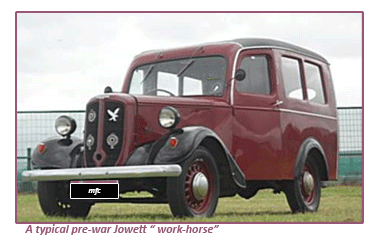 Palmer was handed a simple brief by Jowett- to design an all-new family car.
Palmer was handed a simple brief by Jowett- to design an all-new family car.
The talented auto design wizard retired to his studio, and a few months later emerged with the blueprints for the Jowett Javelin saloon, one of the best looking medium range family saloons produced in the immediate post-war years.
The Javelin featured an aluminium flat-four engine, torsion bar suspension and a streamlined six-seater unitary construction body.Production for the Javelin only got underway in 1947 probably as a result of the endless technical hitches that plagued the company after the Second World War.
Despite numerous problems and delays, Palmer's futuristic design captured the imagination of the UK public. meaning that demand for the Javelin was so high that, along with the pre-war style Bradford estate/commercial vehicle, these two models kept the Jowett factory working flat out well into the Fifties.
![]()
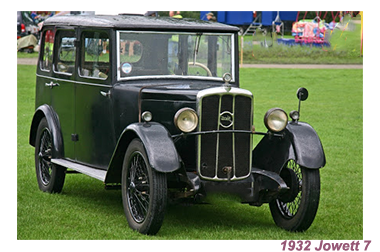 By this time Palmer had also come up with the Jupiter, a neat two-seater sports car which ideally complemented the range.
By this time Palmer had also come up with the Jupiter, a neat two-seater sports car which ideally complemented the range.
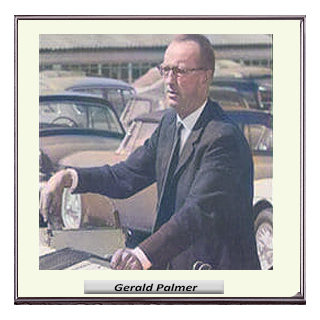 Having succeeded in building up their company to unprecedented levels of success, the Jowett Brothers, now well past retiral age. decided that the time was right to cash in on their years of hard work.
Having succeeded in building up their company to unprecedented levels of success, the Jowett Brothers, now well past retiral age. decided that the time was right to cash in on their years of hard work.
It soon transpired that the new owners lacked the magic touch that the Jowetts brought to the company.
Ironically with a waiting list running into months for their cars, Jowett simply could not produce at the level to meet customer demand.Even worse, attempts by the new management team at Jowett to cut corners meant that quality began to suffer.
![]()
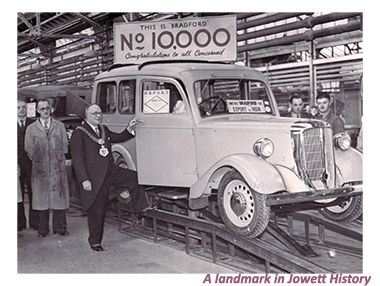 Gradually Jowett found themselves in insurmountable financial difficulties
Gradually Jowett found themselves in insurmountable financial difficulties
Gerald Palmer, with his reputation to protect, saw no option but to take his talents elsewhere, as, by that stage, Jowetts had little or no resources at their disposal to design and develop new vehicles.
With disaster looming a number of possibilities were investigated to pull Jowett back from the abyss.
One of the biggest hopes was that the company be absorbed by one of the UK’S auto giants, or even a US corporation interested in expanding their activities into the British Isles.
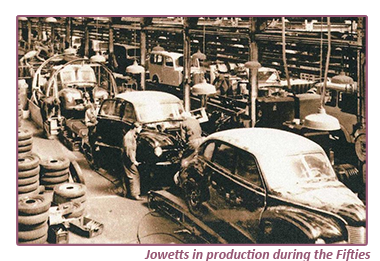 Eventually, the sad fact had to be faced that Jowett would need to wind up the car production facilities.
Eventually, the sad fact had to be faced that Jowett would need to wind up the car production facilities.
The unthinkable occurred in 1954, although the company did continue to operate for for a year or so, manufacture aircraft parts as well as spare parts for Jowett’s vehicles.
Initially operations continued in Jowett's massive Springfield Works plant, and latterly in smaller and more modest manufacturing facilities elsewhere in Yorkshire.
I n their fifty year history, Jowett produced some excellent cars and vans, in particular, Jupiter and the Javelin, many of which have become collectors’ items.
n their fifty year history, Jowett produced some excellent cars and vans, in particular, Jupiter and the Javelin, many of which have become collectors’ items.
While the rise of Jowetts to become one of the UK leading auto manufacturers during the first half of the Twentieth century was slow and steady, their collapse and ultimate demise was rapid, sending a chill throughout the entire UK car industry- a grim warning of things to come.

